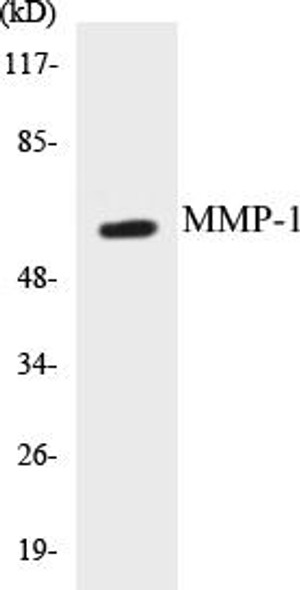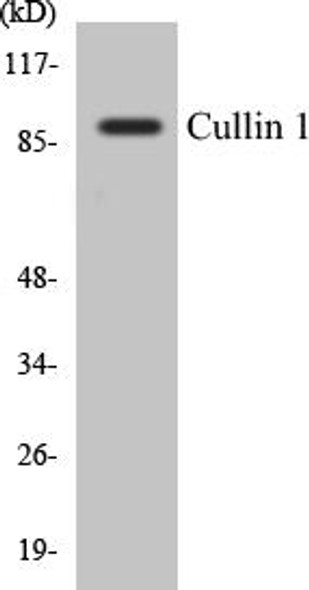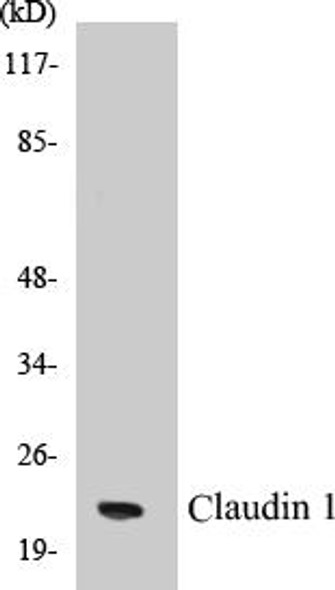Caveolin-1 Colorimetric Cell-Based ELISA Kit
- SKU:
- CBCAB00282
- Product Type:
- ELISA Kit
- ELISA Type:
- Cell Based
- Research Area:
- Immunology
- Reactivity:
- Human
- Mouse
- Rat
- Detection Method:
- Colorimetric
Description
Caveolin-1 Colorimetric Cell-Based ELISA Kit
The Caveolin-1 Colorimetric Cell-Based ELISA Kit from Assay Genie is a highly sensitive and specific assay designed for the quantitative detection of Caveolin-1 levels in cell lysates and tissue homogenates. This kit offers reliable and reproducible results, making it an ideal tool for researchers studying the role of Caveolin-1 in various cellular processes.Caveolin-1 is a key structural protein found in caveolae, membrane lipid rafts that play a critical role in signal transduction and cell transport.
Dysregulation of Caveolin-1 has been linked to various diseases, including cancer, cardiovascular diseases, and neurological disorders, making it a valuable biomarker for research and drug development.With its user-friendly protocol and high-quality components, the Caveolin-1 Colorimetric Cell-Based ELISA Kit is a valuable tool for scientists looking to gain insights into the role of Caveolin-1 in health and disease. Trust Assay Genie for accurate and reliable results in your research endeavors.
| Product Name: | Caveolin-1 Colorimetric Cell-Based ELISA |
| Product Code: | CBCAB00282 |
| ELISA Type: | Cell-Based |
| Target: | Caveolin-1 |
| Reactivity: | Human, Mouse, Rat |
| Dynamic Range: | > 5000 Cells |
| Detection Method: | Colorimetric 450 nmStorage/Stability:4°C/6 Months |
| Format: | 96-Well Microplate |
The Caveolin-1 Colorimetric Cell-Based ELISA Kit is a convenient, lysate-free, high throughput and sensitive assay kit that can detect Caveolin-1 protein expression profile in cells. The kit can be used for measuring the relative amounts of Caveolin-1 in cultured cells as well as screening for the effects that various treatments, inhibitors (ie siRNA or chemicals), or activators have on Caveolin-1.
Qualitative determination of Caveolin-1 concentration is achieved by an indirect ELISA format. In essence, Caveolin-1 is captured by Caveolin-1-specific primary antibodies while the HRP-conjugated secondary antibodies bind the Fc region of the primary antibody. Through this binding, the HRP enzyme conjugated to the secondary antibody can catalyze a colorimetric reaction upon substrate addition. Due to the qualitative nature of the Cell-Based ELISA, multiple normalization methods are needed:
| 1. | A monoclonal antibody specific for human GAPDH is included to serve as an internal positive control in normalizing the target absorbance values. |
| 2. | Following the colorimetric measurement of HRP activity via substrate addition, the Crystal Violet whole-cell staining method may be used to determine cell density. After staining, the results can be analysed by normalizing the absorbance values to cell amounts, by which the plating difference can be adjusted. |
| Database Information: | Gene ID: 857, UniProt ID: Q03135, OMIM: 601047/612526, Unigene: Hs.74034 |
| Gene Symbol: | CAV1 |
| Sub Type: | None |
| UniProt Protein Function: | Caveolin-1: May act as a scaffolding protein within caveolar membranes. Interacts directly with G-protein alpha subunits and can functionally regulate their activity. Involved in the costimulatory signal essential for T-cell receptor (TCR)- mediated T-cell activation. Its binding to DPP4 induces T-cell proliferation and NF-kappa-B activation in a T-cell receptor/CD3- dependent manner. Recruits CTNNB1 to caveolar membranes and may regulate CTNNB1-mediated signaling through the Wnt pathway. Homooligomer. Interacts with GLIPR2, NOSTRIN, SNAP25 and syntaxin. Interacts with rotavirus A NSP4. Interacts (via the N- terminus) with DPP4; the interaction is direct. Interacts with CTNNB1, CDH1 and JUP. Interacts with BMX and BTK. Expressed in muscle and lung, less so in liver, brain and kidney. Belongs to the caveolin family. 2 isoforms of the human protein are produced by alternative initiation. |
| UniProt Protein Details: | Protein type:Motility/polarity/chemotaxis; Adaptor/scaffold; Nuclear receptor co-regulator Chromosomal Location of Human Ortholog: 7q31.1 Cellular Component: protein complex; focal adhesion; integral to plasma membrane; basolateral plasma membrane; endoplasmic reticulum; lipid particle; cell cortex; caveola; acrosomal membrane; cilium; lipid raft; Golgi membrane; early endosome membrane; perinuclear region of cytoplasm; apical plasma membrane; plasma membrane; intracellular; cytoplasmic vesicle; endosome Molecular Function:identical protein binding; protein binding; protease activator activity; enzyme binding; cholesterol binding; patched binding; protein complex scaffold; structural molecule activity; nitric-oxide synthase binding; protein kinase binding; receptor binding Biological Process: mammary gland involution; viral reproduction; negative regulation of epithelial cell differentiation; negative regulation of tyrosine phosphorylation of Stat5 protein; nitric oxide homeostasis; negative regulation of BMP signaling pathway; calcium ion homeostasis; protein localization; sequestering of lipid; regulation of the force of heart contraction by chemical signal; regulation of fatty acid metabolic process; negative regulation of protein binding; inactivation of MAPK activity; regulation of smooth muscle contraction; maintenance of cellular protein localization; skeletal muscle development; cytosolic calcium ion homeostasis; negative regulation of nitric-oxide synthase activity; cellular response to starvation; membrane depolarization; cholesterol homeostasis; response to estrogen stimulus; T cell costimulation; negative regulation of endothelial cell proliferation; negative regulation of protein ubiquitination; regulation of nitric-oxide synthase activity; response to calcium ion; response to progesterone stimulus; negative regulation of JAK-STAT cascade; leukocyte migration; lactation; vesicle organization and biogenesis; negative regulation of peptidyl-serine phosphorylation; negative regulation of pinocytosis; negative regulation of transcription from RNA polymerase II promoter; nitric oxide metabolic process; mammary gland development; calcium ion transport; negative regulation of cytokine and chemokine mediated signaling pathway; angiogenesis; vasculogenesis; protein homooligomerization; vasoconstriction; cholesterol transport; negative regulation of MAPKKK cascade; negative regulation of nitric oxide biosynthetic process; MAPKKK cascade; positive regulation of metalloenzyme activity; positive regulation of peptidyl-serine phosphorylation; regulation of peptidase activity; cellular calcium ion homeostasis; triacylglycerol metabolic process; regulation of blood coagulation; response to hypoxia; positive regulation of vasoconstriction; blood coagulation; vascular endothelial growth factor receptor signaling pathway Disease: Lipodystrophy, Congenital Generalized, Type 3; Partial Lipodystrophy, Congenital Cataracts, And Neurodegeneration Syndrome; Pulmonary Hypertension, Primary, 3 |
| NCBI Summary: | The scaffolding protein encoded by this gene is the main component of the caveolae plasma membranes found in most cell types. The protein links integrin subunits to the tyrosine kinase FYN, an initiating step in coupling integrins to the Ras-ERK pathway and promoting cell cycle progression. The gene is a tumor suppressor gene candidate and a negative regulator of the Ras-p42/44 mitogen-activated kinase cascade. Caveolin 1 and caveolin 2 are located next to each other on chromosome 7 and express colocalizing proteins that form a stable hetero-oligomeric complex. Mutations in this gene have been associated with Berardinelli-Seip congenital lipodystrophy. Alternatively spliced transcripts encode alpha and beta isoforms of caveolin 1.[provided by RefSeq, Mar 2010] |
| UniProt Code: | Q03135 |
| NCBI GenInfo Identifier: | 13637934 |
| NCBI Gene ID: | 857 |
| NCBI Accession: | Q03135.4 |
| UniProt Secondary Accession: | Q03135,Q9UGP1, Q9UNG1, Q9UQH6, |
| UniProt Related Accession: | Q03135 |
| Molecular Weight: | 178 |
| NCBI Full Name: | Caveolin-1 |
| NCBI Synonym Full Names: | caveolin 1, caveolae protein, 22kDa |
| NCBI Official Symbol: | CAV1 |
| NCBI Official Synonym Symbols: | CGL3; PPH3; BSCL3; LCCNS; VIP21; MSTP085 |
| NCBI Protein Information: | caveolin-1; cell growth-inhibiting protein 32 |
| UniProt Protein Name: | Caveolin-1 |
| Protein Family: | Caveolin |
| UniProt Gene Name: | CAV1 |
| UniProt Entry Name: | CAV1_HUMAN |
| Component | Quantity |
| 96-Well Cell Culture Clear-Bottom Microplate | 2 plates |
| 10X TBS | 24 mL |
| Quenching Buffer | 24 mL |
| Blocking Buffer | 50 mL |
| 15X Wash Buffer | 50 mL |
| Primary Antibody Diluent | 12 mL |
| 100x Anti-Phospho Target Antibody | 60 µL |
| 100x Anti-Target Antibody | 60 µL |
| Anti-GAPDH Antibody | 60 µL |
| HRP-Conjugated Anti-Rabbit IgG Antibody | 12 mL |
| HRP-Conjugated Anti-Mouse IgG Antibody | 12 mL |
| SDS Solution | 12 mL |
| Stop Solution | 24 mL |
| Ready-to-Use Substrate | 12 mL |
| Crystal Violet Solution | 12 mL |
| Adhesive Plate Seals | 2 seals |
The following materials and/or equipment are NOT provided in this kit but are necessary to successfully conduct the experiment:
- Microplate reader able to measure absorbance at 450 nm and/or 595 nm for Crystal Violet Cell Staining (Optional)
- Micropipettes with capability of measuring volumes ranging from 1 µL to 1 ml
- 37% formaldehyde (Sigma Cat# F-8775) or formaldehyde from other sources
- Squirt bottle, manifold dispenser, multichannel pipette reservoir or automated microplate washer
- Graph paper or computer software capable of generating or displaying logarithmic functions
- Absorbent papers or vacuum aspirator
- Test tubes or microfuge tubes capable of storing ≥1 ml
- Poly-L-Lysine (Sigma Cat# P4832 for suspension cells)
- Orbital shaker (optional)
- Deionized or sterile water
*Note: Protocols are specific to each batch/lot. For the correct instructions please follow the protocol included in your kit.
| Step | Procedure |
| 1. | Seed 200 µL of 20,000 adherent cells in culture medium in each well of a 96-well plate. The plates included in the kit are sterile and treated for cell culture. For suspension cells and loosely attached cells, coat the plates with 100 µL of 10 µg/ml Poly-L-Lysine (not included) to each well of a 96-well plate for 30 minutes at 37°C prior to adding cells. |
| 2. | Incubate the cells for overnight at 37°C, 5% CO2. |
| 3. | Treat the cells as desired. |
| 4. | Remove the cell culture medium and rinse with 200 µL of 1x TBS, twice. |
| 5. | Fix the cells by incubating with 100 µL of Fixing Solution for 20 minutes at room temperature. The 4% formaldehyde is used for adherent cells and 8% formaldehyde is used for suspension cells and loosely attached cells. |
| 6. | Remove the Fixing Solution and wash the plate 3 times with 200 µL 1x Wash Buffer for five minutes each time with gentle shaking on the orbital shaker. The plate can be stored at 4°C for a week. |
| 7. | Add 100 µL of Quenching Buffer and incubate for 20 minutes at room temperature. |
| 8. | Wash the plate 3 times with 1x Wash Buffer for 5 minutes each time. |
| 9. | Add 200 µL of Blocking Buffer and incubate for 1 hour at room temperature. |
| 10. | Wash 3 times with 200 µL of 1x Wash Buffer for 5 minutes each time. |
| 11. | Add 50 µL of 1x primary antibodies (Anti-Caveolin-1 Antibody and/or Anti-GAPDH Antibody) to the corresponding wells, cover with Parafilm and incubate for 16 hours (overnight) at 4°C. If the target expression is known to be high, incubate for 2 hours at room temperature. |
| 12. | Wash 3 times with 200 µL of 1x Wash Buffer for 5 minutes each time. |
| 13. | Add 50 µL of 1x secondary antibodies (HRP-Conjugated AntiRabbit IgG Antibody or HRP-Conjugated Anti-Mouse IgG Antibody) to corresponding wells and incubate for 1.5 hours at room temperature. |
| 14. | Wash 3 times with 200 µL of 1x Wash Buffer for 5 minutes each time. |
| 15. | Add 50 µL of Ready-to-Use Substrate to each well and incubate for 30 minutes at room temperature in the dark. |
| 16. | Add 50 µL of Stop Solution to each well and read OD at 450 nm immediately using the microplate reader. |
(Additional Crystal Violet staining may be performed if desired – details of this may be found in the kit technical manual.)










